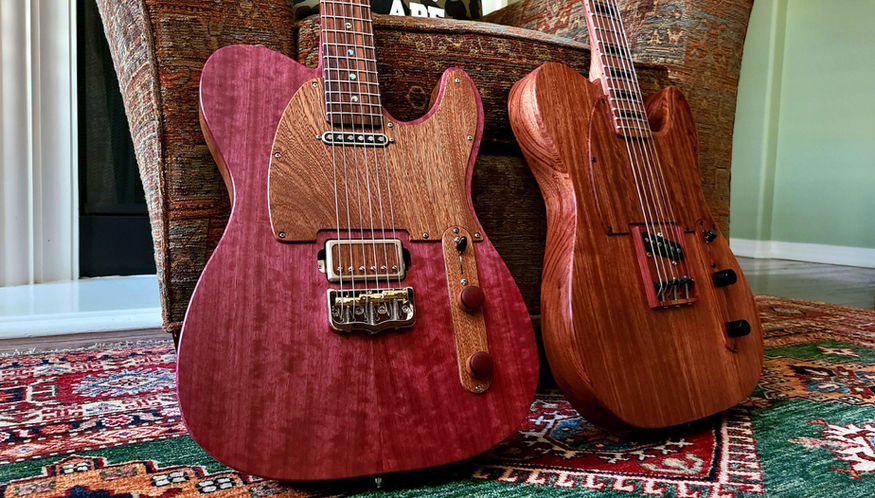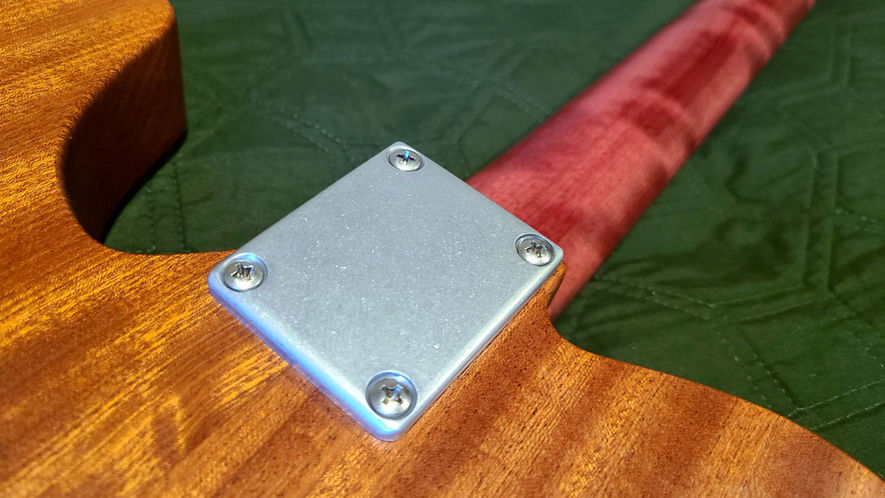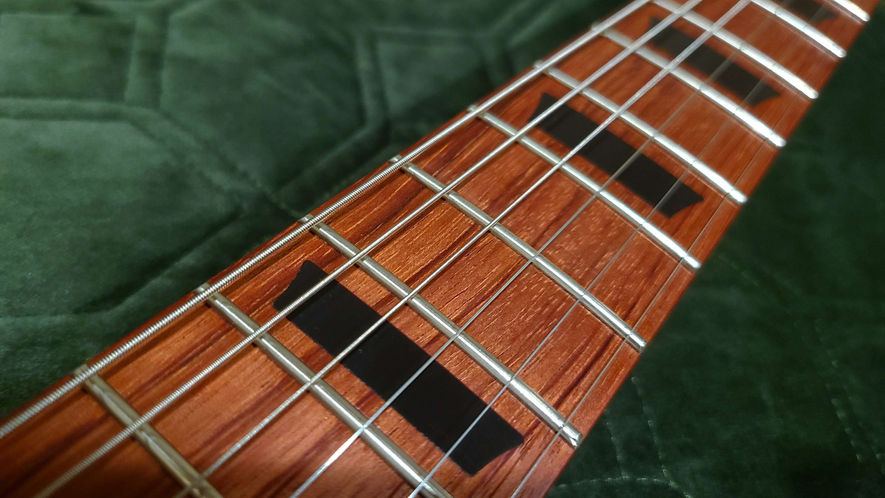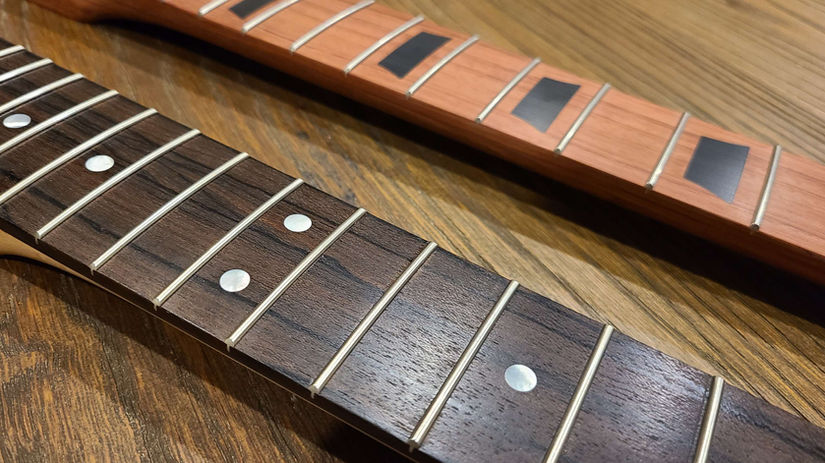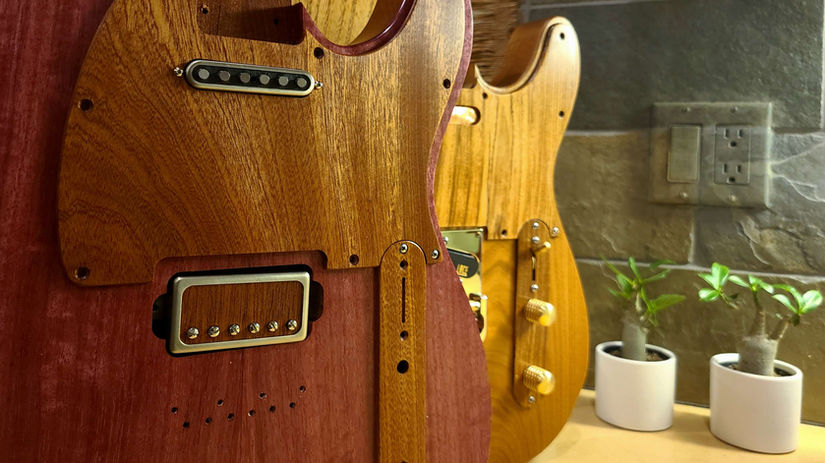

Pink Ivory + Purpleheart
"As each of my guitars is built, I'd like to think I give it life"--- Zi Guitar

Pink Ivory
Sometimes in life "Less is More" and this is particularly true when it comes to electric guitar designs. The very first prototype Esquire (and the later Telecaster) was completed by Leo Fender back in 1949.
In March 1950 the Esquire was first manufactured. With a solid body, square edged and single cutaway, one single bridge pickup, the Esquire was officially born. Even since, for more than half a century till today, Esquire/Telecaster became a creation of one of the most distinctive and recognized electric guitars in music history.
The Esquire was the first ever mass-produced electric guitar, a huge achievement that paved the way for so much. For such a cornerstone in a moment of guitar history, the shape, sound, and love for the Esquire remains timeless.
Inspired by this timeless classic, I decided to build another Zi Guitar Esquire. This time my choice of wood is Bubinga, usually referred to as African Rosewood. Because of its rarity and its reddish/pinkish color sometimes it's also referred to as the Pink Ivory in the Exotic wood world. Tonally speaking, bubinga had some Rosewood-style warmth combined with Mahogany- or Koa-like midrange and great sustain.

Purpleheart
As a tonewood, purpleheart offers a remarkably balanced tone given its density. It's characterized by relatively high sustain and projection along with a resonant bass response, bright mids and clear upper-mid/high-frequency profile. It projects clean fundamentals and overtones with precision and adds subtle warmth across the low and low-mid frequencies.
Sapele is a standard ‘go-to’ material for soundboards in acoustic guitar building. It is a well-rounded tonewood for many styles of playing but excellent for those whose style demands a wide dynamic response and a robust, meaty tone. It's known for its tight grain pattern, its high stiffness and relative lightness, translating to a broad dynamic range that stands up well when strummed heartily. At the same time, it’s also quite responsive to fingerpicking.
The “body” of a guitar or its back and sides, while perhaps not as significant as the pickups in an electric guitar’s sound, still needs careful consideration as it can have a tremendous effect on the overall tone of the instrument.
This Zi guitar Purpleheart chose spruce as its body wood, with purpleheart top will give you an excellently balanced with notable sustain, pronounced bass response and a superb overall tone of the instrument.
Features
Pink Ivory
Body Shape
Telecaster

Body Wood
Two pieces bubinga

Wood Finish
Hand rubbed oil finish

Neck Wood
Bubinga

Fingerboard
Bubinga

Tuners
Trimlok black pearl tuners

Pickup
Gatekeeper bridge pickup

Bridge
Solid Bubinga wooden bridge with Graph Tech black saddles

Pickguard & Control Plate
Solid bubinga pickguard and control plate


Purpleheart
Body Shape
Telecaster

Body Wood
Two pieces figured sapele

Wood Finish
oil/wax finish

Neck Wood
Purpleheart

Fingerboard
Kingwood

Tuners
SoundLok Locking tuners

Pickup
Goatrock HS tele pickup with sapele top

Bridge
Nickle half bridge with vintage brass saddles

Pickguard & Control Plate
Solid sapele pickguard and control plate

